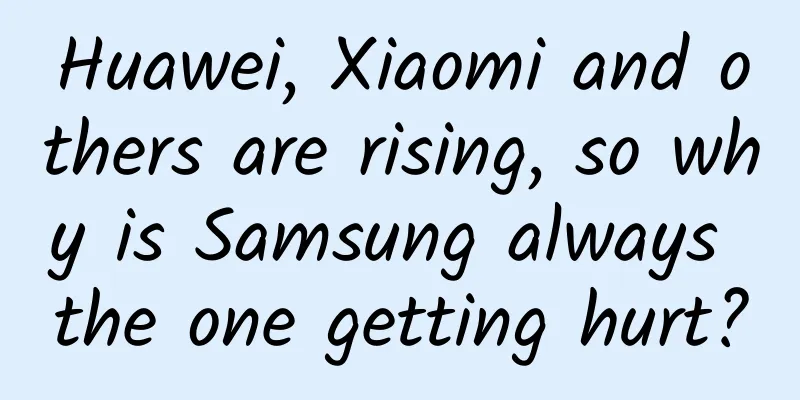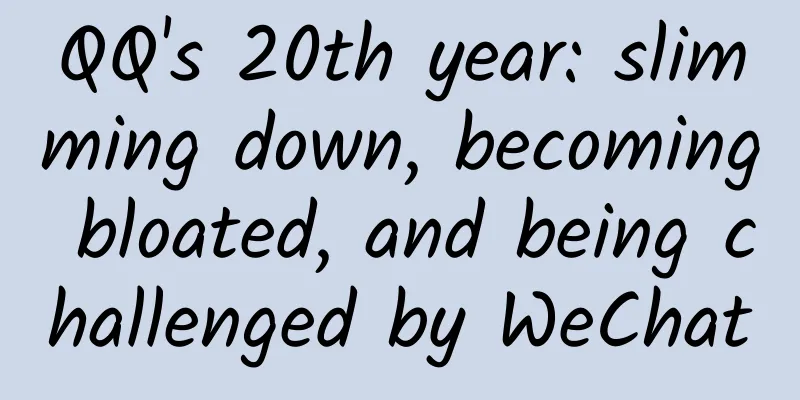Huawei, Xiaomi and others are rising, so why is Samsung always the one getting hurt?

|
More than a month after its overseas debut and a week after its domestic launch, the market performance of Samsung Note 8 is still unclear. According to Samsung's own statement, of course, it is as vigorous as chicken blood. Shin Jong-kyun, president of Samsung's mobile business, showed off a lot of data, claiming that Note 8 set the highest record in the history of the Note series, with 395,000 units pre-ordered on the first day and 650,000 pre-sales completed in 40 countries and regions in 5 days. The market performance is "quite encouraging." On the other hand, data from China is not optimistic. The total number of Note 8 pre-orders is less than 10,000, which is a drop in the bucket compared to Xiaomi and Apple. The number of pre-orders for Xiaomi MIX 2 on the official website exceeded 600,000 in 24 hours. The number of iPhone 8 Plus orders from JD.com, Suning and Gome is as high as 3 million. It should be noted that the first batch of global shipments is only 1.18 million units, and the quota for China is only 278,000 units. It was Korean users who came to Samsung's rescue. So far, Koreans have taken orders for 800,000 units. In the United States, in order to offset the competition from Apple, Samsung has put a lot of effort into e-commerce, physical stores and operators. Amazon and Best Buy have considerable discounts, and the most ruthless one is T-Mobile's buy one get one free offer, where two phones with a two-year contract cost a total of $420, which is quite cost-effective. Samsung is determined to capture the market before the iPhone X is released in large quantities. According to Samsung, Note 8 also performed well in the UK, Ireland and India, but the absolute quantity is still pitiful, and there are many embarrassing things. In the trade-in activity launched by US operator Sprint, the so-called old phones actually included the Note 8 released on August 23, but the exchange was for iPhone 8, which made Samsung speechless. Overall, the Note 8 is only halfway done. Samsung cautiously announced that the Note 8 boosted consumer confidence, but the reference it chose was inappropriate. The cumulative global sales of the Note 7 were only 2 million units, so surpassing this product was not worth getting excited about. However, Samsung's counterattack depends on the three important markets of China, the United States and India. India's high-end demand is insufficient, and the 200,000 pre-orders are not a big deal. The United States will inevitably face strong attacks from the iPhone in Q4, so China's performance is crucial. Anyone with a discerning eye knows this very well. Samsung did its homework for the domestic launch event on September 13. Not only was the atmosphere completely Chinese, but executives also appeared in traditional costumes, and many exclusive gift packages were given to Chinese users in one go. Judging from the contents of the gift package, Samsung's strategy can be roughly summarized into three points: 1. Shift from hardware to services Samsung started out as a hardware manufacturer, and in the past it liked to show off its configurations and data at press conferences, but starting with the S8, it began to strengthen its services. For example, in May this year, it upgraded its butler service, and on top of the existing services of 50% off replacement for broken screens within six months, 50% off replacement for batteries, 24/7 exclusive customer service, repair green channel, and door-to-door recycling, it added a 50% off replacement for a lost S Pen and a 120 yuan office365 coupon in cooperation with Microsoft. 2. Optimize software experience The hard innovation stage of smartphones has ended, and the focus of competition is on experience optimization. This time, Samsung made an exception and gave the S Pen a localized "notes" function. That is, Chinese users of Note 8 can circle and mark points when reading, and also support sharing to social circles, which is quite thoughtful. However, the truly valuable Bixby voice assistant still only supports English and Korean. Although it will definitely be upgraded in the future, it is still a flaw at present. 3. Create offline scenarios Samsung is aware that mobile phones are widely used in online and offline life, so it pays attention to the creation of scenarios. Samsung Pay has joined WeChat Pay and JD Quick Pass, and cooperated with Mobike on NFC unlocking function, obviously hoping to more deeply integrate mobile phones with users' lives. Compared with Apple's arrogance, Samsung can be said to have put itself in the right position. But why is the market downturn still continuing? Putting aside the well-known events such as the THAAD crisis, what are the seemingly accidental but actually inevitable factors that are affecting Samsung's recovery? There are at least five points at the level of competitors, products and users. 1. Every time domestic mobile phones make a push, Samsung is hit harder than Apple Samsung's mobile phone market share in China has been declining for four consecutive years, and the timeline basically coincides with the rise of domestic mobile phones. A situation of one rising and the other falling has already formed, which is also determined by the overall industry structure. As the creator of the smartphone, Steve Jobs has passed away and Cook is controversial, but it is a fact that Apple's unique ecosystem has its advantages over Android phones and is irreplaceable in the short term. This can be seen from the recent press conferences. Despite the early release of Note 8 and Xiaomi MIX 2, and despite the ridicule from all kinds of Apple haters and internet trolls, the unprecedented media and public enthusiasm for the iPhone speaks for itself. Samsung, which started out as a hardware company, does not have this advantage. Its ecosystem is still built on Android, and its detail optimization and localized application scenarios are even worse than those of domestic mobile phone manufacturers. This determines that the cost of replacing Samsung for users is very low. 2. Samsung lacks brand image in fan culture Brand reputation depends to a large extent on the attitude of fans. The strength and influence of Apple fans and Mi fans are obvious to all. Huawei fans, Luo Yonghao fans and Meizu fans are not far behind. Samsung fans have a weak presence. To a certain extent, this is because the Samsung brand has not established a unique cultural connotation, and therefore there is no effective psychological identification. At the high price range of four to five thousand yuan, Samsung users do not have the stickiness of Apple. 3. Samsung's advantages are easier to copy The brand barrier of Samsung mobile phones has always been hardware attributes. Its advantage in competing with domestic mobile phones in the Android camp has been weakened. Samsung is increasingly inclined to use its strength in the supply chain to suppress its competitors, which is a manifestation of lack of confidence. Samsung's position in the entire mobile phone industry chain is becoming increasingly delicate. On the one hand, if domestic brands lose Samsung's support, they may not be able to make a qualified flagship phone. This is indeed true. This has relatively little impact on Apple, because Apple has always emphasized self-design, such as the A11 chip, which has complete intellectual property rights. But on the other hand, because Samsung plays a dual role, it is impossible for it to completely stop supplying to the outside world. The so-called "iPhone is made in Korea" that the Korean people are proud of has no practical significance in the era of globalization. 4. The product generation gap is not obvious, and the price and positioning are confusing The former is Samsung's most serious problem. Due to the lack of innovation in smartphones in recent years, Chinese brands have put a lot of thought into hyping concepts and optimizing details of the experience. However, Samsung, which competes with Apple, lacks sensitivity in this regard. Each product iteration is almost entirely driven by technology, which is costly but does not give users a strong impression. In terms of the product matrix, the S8 released in the first half of the year and the Note 8 released in the second half of the year mainly adopted the dual flagship strategy, and the intention was of course to attack Apple on two fronts, but the differentiation between the two is pitifully small. The specification of S8+ reaches 6.2 inches, which is almost the same as the 6.3 inches of Note 8, but it attempts to cover two different market segments, which is actually a kind of internal friction. 5. The far-reaching impact of the quality crisis Many people believe that the Note 7 explosion incident was a fatal blow to Samsung, but it was actually the factor with the least impact. The fact that Samsung’s brand value rose by 14% last year is an example, showing that users are more tolerant than expected. For Samsung, the real danger of the incident lies in two points: First, it greatly interfered with Samsung's product iteration plan. Many new technologies that Samsung invested in this series of products failed to play a role, but instead served as a hindrance to others. It also directly led to the fact that the innovation of Note 8 could not keep up with iPhone X and Xiaomi MIX 2. Second, it had a strong psychological impact on non-Samsung users. Before the Note 7 explosion, there was a great hope that a large number of users would be diverted from the iPhone, but after the incident, the iPhone 7 became a hot seller. Penguin Intelligence's survey also showed that 42.5% of users who gave up Samsung chose Huawei. In this sense, the failure of Note 8 in the Chinese market may mean the shaking of Samsung's dominance as the king of Android phones. Huawei is becoming increasingly powerful, Xiaomi is learning from its mistakes, OV's sales are still scary, and with Google's acquisition of HTC, Samsung doesn't have much time left to revive the Chinese market. As a winner of Toutiao's Qingyun Plan and Baijiahao's Bai+ Plan, the 2019 Baidu Digital Author of the Year, the Baijiahao's Most Popular Author in the Technology Field, the 2019 Sogou Technology and Culture Author, and the 2021 Baijiahao Quarterly Influential Creator, he has won many awards, including the 2013 Sohu Best Industry Media Person, the 2015 China New Media Entrepreneurship Competition Beijing Third Place, the 2015 Guangmang Experience Award, the 2015 China New Media Entrepreneurship Competition Finals Third Place, and the 2018 Baidu Dynamic Annual Powerful Celebrity. |
<<: Tesla launches V10 system to some users
Recommend
Technical tips! "Ya Ya", "Meng Lan", "Hua Hua"... How to distinguish who is who among so many pandas?
After about 16 hours of flight, the cargo plane c...
In addition to defeating Tesla, Audi e-tron has another major mission
Starting with the e-tron, Audi's first electr...
How much does it cost to attract investment for the Chaohu Specialties Mini Program? What is the investment quotation for Chaohu Specialties Mini Program?
How much does it cost to attract investors for th...
Are the free POS machine applications trustworthy? Which ones can be used with confidence?
Is the free application for POS machine trustwort...
Do you feel happy when you hear the word "detox"? "Some" detoxification may do more harm than good to your body!
Leviathan Press: In real life, except for people ...
The farce of “Qin Lang lost his homework” has come to an end. Have you been deceived too?
Editor’s Note: "Qin Lang, Grade 1, Class 8, ...
Where does the energy for upgrading human civilization come from? Do we need to build a Dyson sphere?
This article is based on answering questions from...
Stop saying that children have ADHD, it seems that adults also have it?
Speaking of "ADHD", it sounds like a di...
China’s silver shortage is very serious!
In the eyes of modern people, "bank" is...
With the fifth-generation DM system and e-platform 3.0 Evo, the SEAL/SEAL 07 DM-i highlights its explosive physique
BYD is a global leader in the new energy market, ...
Content operation: content distribution model analysis!
In this article, the author will analyze with you...
National Disability Day丨Today, forward for love!
May 15th is the 32nd National Day for Persons wit...
WeChat mini program function of milk tea shop, how to set up WeChat mini program of milk tea shop?
After the Qingming Festival, the temperature bega...
Juniper VS Chinese Elm Tree: I recognize them as human names, but I read them wrong as plant names?
The Chinese names of plants are like refined code...
Baise Game Mini Program Customization Price Inquiry, How much does it cost to customize the Baise Game Mini Program?
There are two types of customization of Baise Gam...









